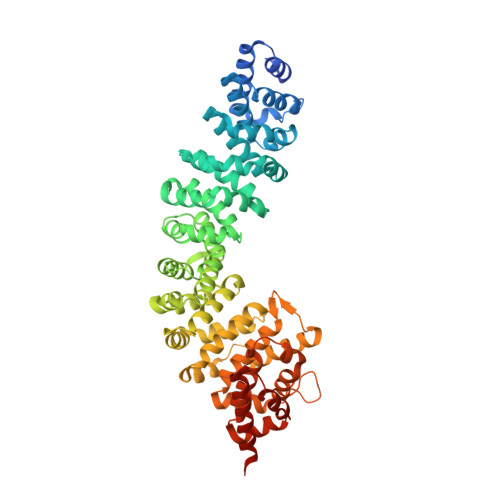A Conserved Phosphorylation Switch Controls the Interaction between Cadherin and beta-Catenin In Vitro and In Vivo
Choi, H.J., Loveless, T., Lynch, A.M., Bang, I., Hardin, J., Weis, W.I.(2015) Dev Cell 33: 82-93
- PubMed: 25850673
- DOI: https://doi.org/10.1016/j.devcel.2015.02.005
- Primary Citation of Related Structures:
4R0Z, 4R10, 4R11 - PubMed Abstract:
In metazoan adherens junctions, β-catenin links the cytoplasmic tail of classical cadherins to the F-actin-binding protein α-catenin. Phosphorylation of a Ser/Thr-rich region in the cadherin tail dramatically enhances affinity for β-catenin and promotes cell-cell adhesion in cell culture systems, but its importance has not been demonstrated in vivo. Here, we identify a critical phosphorylated serine in the C. elegans cadherin HMR-1 required for strong binding to the β-catenin homolog HMP-2. Ablation of this phosphoserine interaction produces developmental defects that resemble full loss-of-function (Hammerhead and Humpback) phenotypes. Most metazoans possess a single gene for β-catenin, which is also a transcriptional coactivator in Wnt signaling. Nematodes and planaria, however, have a set of paralogous β-catenins; for example, C. elegans HMP-2 functions only in cell-cell adhesion, whereas SYS-1 mediates transcriptional activation through interactions with POP-1/Tcf. Our structural data define critical sequence differences responsible for the unique ligand specificities of these two proteins.
Organizational Affiliation:
School of Biological Sciences, Seoul National University, Seoul 151-747, South Korea. Electronic address: choihj@snu.ac.kr.





















